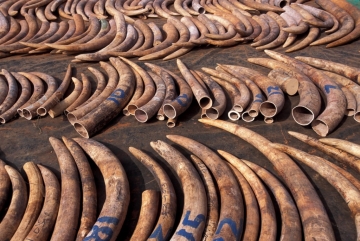Elephant Poaching
The poaching of elephant for their meat, ivory, and hides has been one of the greatest threats to their existence. This illegal act has actually led to a big decline in the number of elephants in many parts of the world.
Origin of Elephant Poaching
Historically, many cultures made their ornaments and other works of art from elephant ivory. The use of ivory has actually rivaled that of gold in many parts of the world.
Ban on Ivory Trading
During the 20th century, ivory trade contributed to the decline of the elephant population in Africa. This prompted international bans on all ivory imports. In June of 1989, the United States banned ivory imports and this was followed by other countries, including Japan and many nations in Europe. During this time, Kenya destroyed all of its ivory stocks.
The Convention on International Trade in Endangered Species, or CITES, approved an international ban on ivory that went into effect in January of 1990. After this ban, unemployment increased in China and India where this industry was economically important.
Botswana, Zimbabwe, Zambia, Malawi and Namibia were allowed to continue with this trade since the local elephant population in these countries was wealthy. However, the condition they had to follow in order to continue the trade was that the sources of the ivory be from the elephants that died from natural causes.
Elephant Poaching in Asia
The Asian elephant lives in places with a high human population. Because of the need for a large amount of land, these animals are greatly affected by elephant poaching. Elephants cannot co-exist with humans in agricultural areas because of their size and food requirements. This causes conflicts between humans and elephants which often lead to many deaths of both humans and elephants.
Elephant Poaching in Africa
Researchers have made a clear connection between elephant poaching in Africa and the dwindling population of elephants. This has been brought about by a great demand of ivory in Asia, poverty, and corruption. In areas where child mortality and poverty are the worst, elephant poaching is high, although the poor villagers do not really benefit from this illegal trade.
The great demand for ivory used for carvings has been rising in Asian countries such as China. This has fuelled a new wave of elephant slaughter in Africa. Since about 2010, poaching levels in African countries have exceeded 5% of the total population. This means the killings have outpaced the animal’s birth rate.

